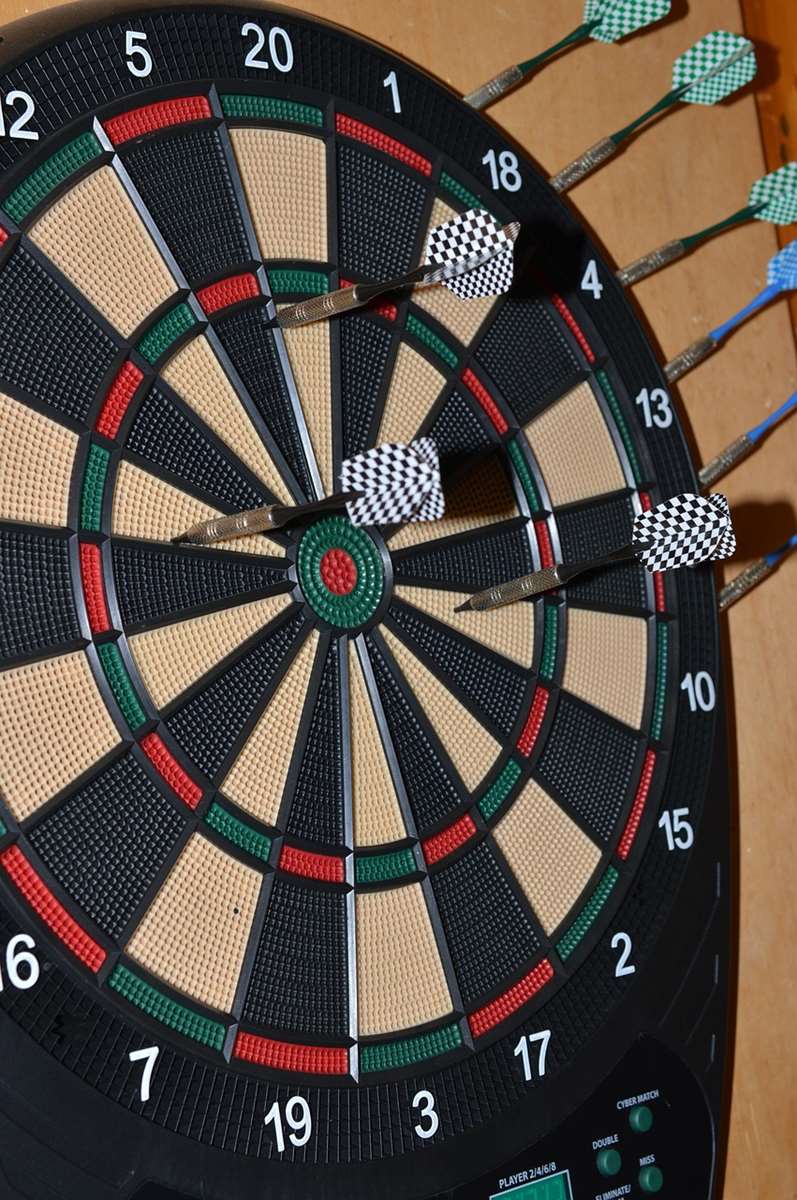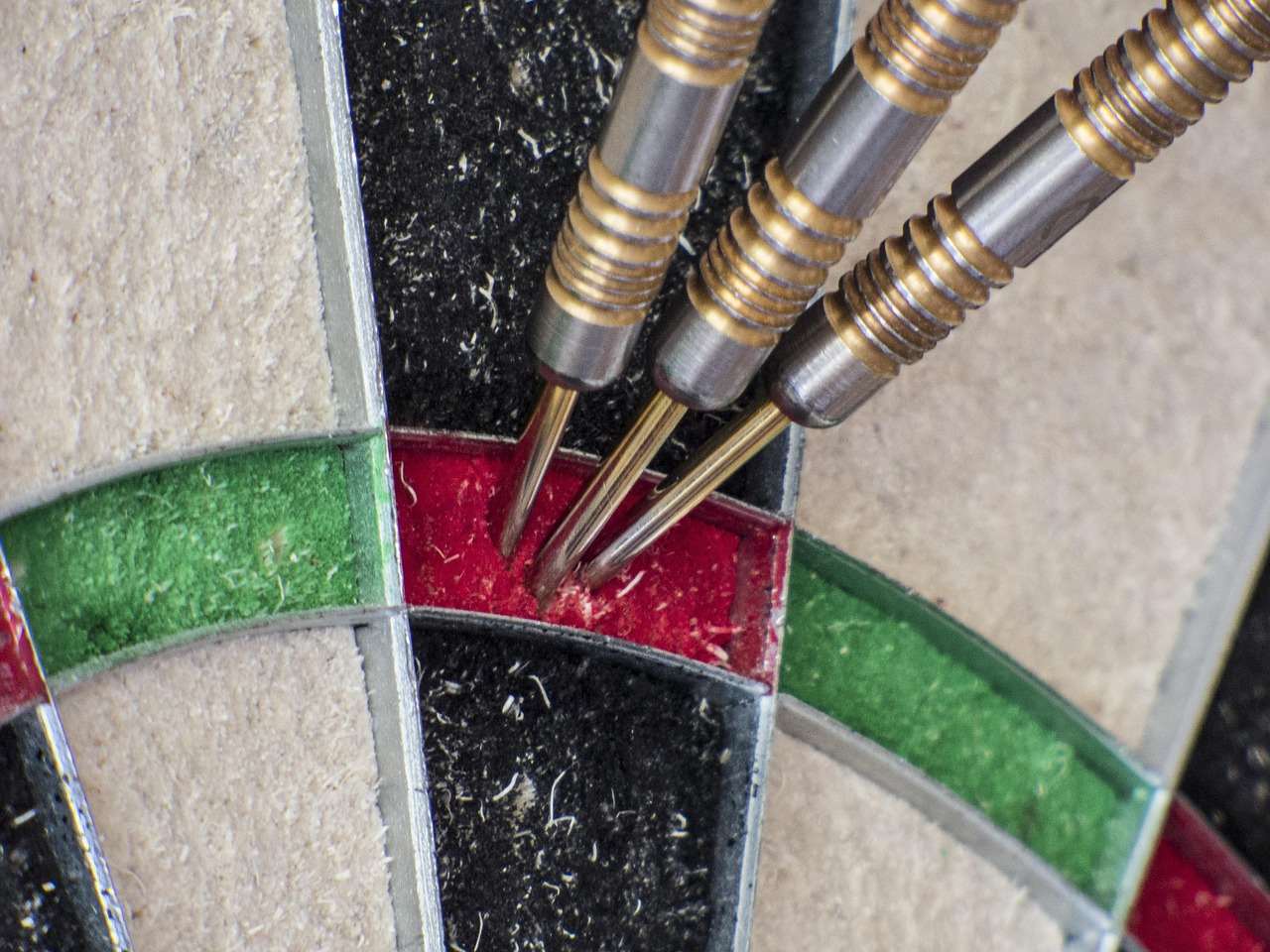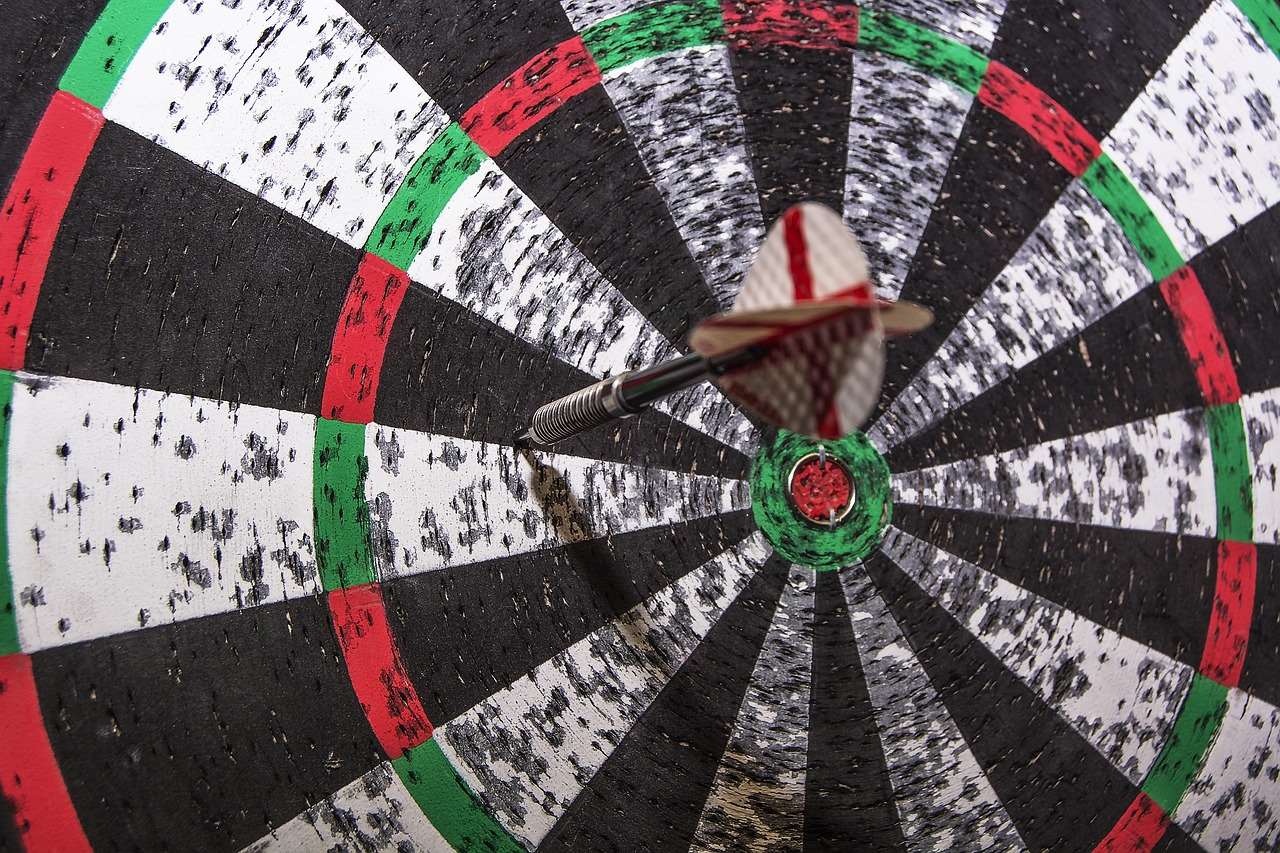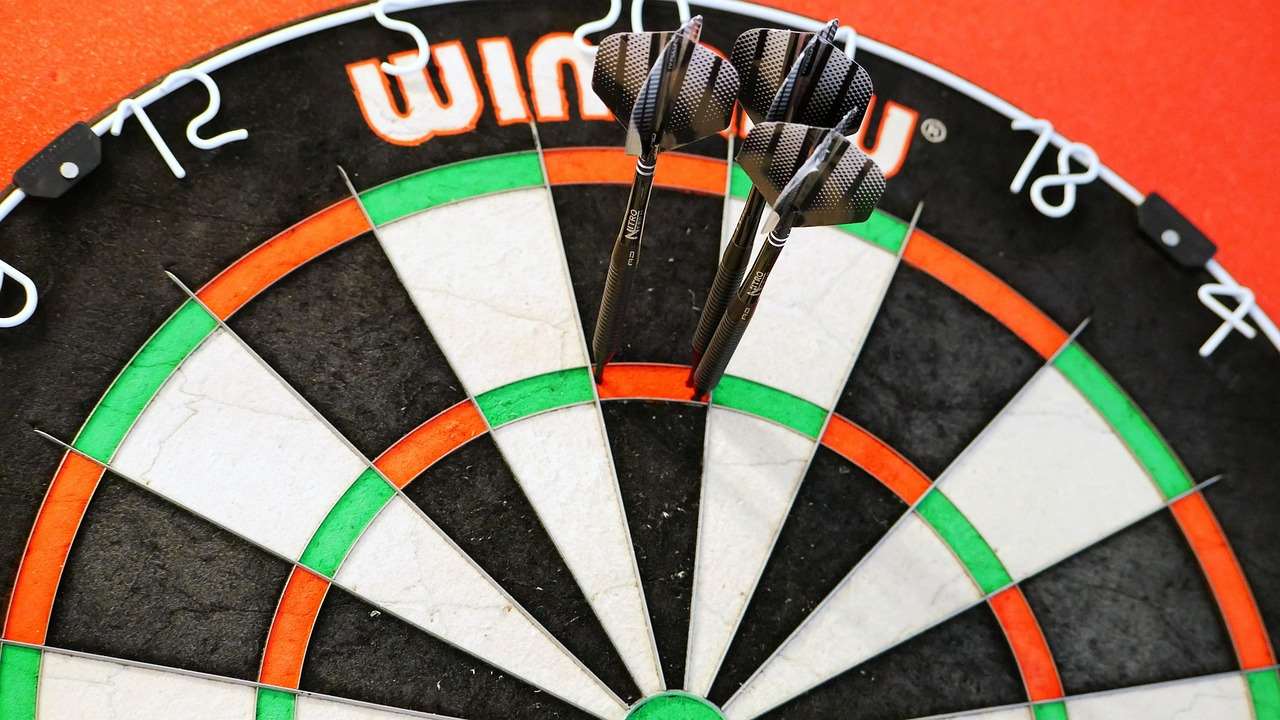Choosing the right flight shape for steel tip darts is crucial for stability and accuracy, directly impacting your dart trajectory and scoring potential; selecting the correct shape depends on your throwing style and dart setup. This article delves into the various flight shapes available, their characteristics, and how to choose the best one to optimize your steel tip dart performance.
⚠️ Still Using Pen & Paper (or a Chalkboard)?! ⚠️
Step into the future! The Dart Counter App handles all the scoring, suggests checkouts, and tracks your stats automatically. It's easier than you think!
Try the Smart Dart Counter App FREE!Ready for an upgrade? Click above!
Understanding Dart Flight Shapes and Their Impact
Dart flights are essential components that influence the aerodynamics of your dart. The flight shape affects the dart’s stability, drag, and trajectory, ultimately impacting where it lands on the dartboard. Different flight shapes cater to various throwing styles and preferences, making it important to understand their individual characteristics.
When considering flight shape for steel tip darts, the primary factors to evaluate are the surface area, the overall shape, and the material. Larger flights generally create more drag and stabilize the dart quicker, which can be beneficial for players with a faster throwing motion. Conversely, smaller flights offer less drag and may be preferred by players with a smoother, slower release.

Common Dart Flight Shapes
Several popular flight shapes are available for steel tip darts, each with unique attributes:
- Standard Flights: These are the most common type of dart flights, offering a good balance of stability and drag. They are a versatile choice suitable for many throwing styles.
- Slim Flights: Slim flights have a smaller surface area than standard flights, resulting in less drag and a flatter trajectory. They are often favored by players with a consistent throwing style.
- Kite Flights: Kite flights provide excellent stability and control. Their unique shape helps to correct minor imperfections in the throw.
- Vortex Flights: These flights are designed to create a swirling effect, reducing drag and improving accuracy.
- Teardrop Flights: Teardrop flights are another popular option, known for their aerodynamic profile and ability to reduce bounce-outs.
Choosing the Right Flight Shape For Steel Tip
Selecting the ideal flight shape for steel tip darts requires considering several factors, including your throwing style, dart weight, and shaft length. Experimentation is key to finding the combination that works best for you.
Here’s a step-by-step approach to help you choose the right flight shape:
- Evaluate Your Throwing Style: Observe your throwing motion and identify any inconsistencies or tendencies. Do you throw with a fast, powerful motion, or a smoother, more controlled release? This will help you determine whether you need a flight that provides more stability or less drag.
- Consider Dart Weight: Heavier darts generally require larger flights to maintain stability, while lighter darts can be paired with smaller flights.
- Experiment with Different Shapes: Purchase a variety of flight shapes and experiment with them during practice sessions. Pay attention to how each flight affects the dart’s trajectory and consistency. Consider the dart barrel too, as that can change how a dart flies.
- Adjust Shaft Length: The length of your dart shaft can also influence the optimal flight shape. Shorter shafts may require larger flights, while longer shafts may pair better with smaller flights. You can Choose Best Dart Equipment to get the best fit.
- Monitor Your Results: Keep track of your scores and observe where your darts are landing on the dartboard. This will provide valuable feedback to help you fine-tune your flight shape selection.
Ultimately, the best flight shape for steel tip darts is the one that helps you achieve the most consistent and accurate results. There is no one-size-fits-all solution, so it is important to experiment and find what works best for your individual throwing style and dart setup. Understanding the nuances of flight shape can substantially improve your game, so investing time to find the best option is well worth the effort.

The Impact of Flight Material
Besides the flight shape, the material of the dart flight also influences its performance. Common materials include:
- Polyester: Polyester flights are durable and offer good value for money. They are a popular choice for beginners and casual players.
- Nylon: Nylon flights are more flexible than polyester flights, providing better durability and resistance to tearing.
- Plastic: Plastic flights are known for their rigidity and consistent shape. They are often used by experienced players who prefer a stable and predictable flight.
- Aluminum: Aluminum flights offer excellent durability and a sleek appearance. They are a premium option for serious dart players.
Each material possesses unique characteristics affecting the dart’s flight. Some materials are more durable, while others provide improved grip or reduced drag. Experimenting with various materials can help you determine the best option for your playing style.
Related Keywords: The Importance of Dart Setup
Beyond the flight shape and material, other factors influence your dart’s performance. The dart’s weight, barrel shape, and shaft length all play a crucial role in its overall flight characteristics. When seeking the perfect flight shape for steel tip darts, it’s essential to consider these elements to attain maximum precision. Here are some points to consider regarding dart setup:
- Dart Weight: Heavier darts are typically more stable in flight, while lighter darts offer greater maneuverability. Experiment with different dart weights to find the one that feels most comfortable and controllable.
- Barrel Shape: The barrel shape affects the dart’s center of gravity and its aerodynamic properties. Different barrel shapes are designed to suit various grip styles and throwing motions. There’s a lot to consider when comparing budget vs premium darts and this is definitely one of them.
- Shaft Length: Shorter shafts can improve dart grouping, while longer shafts can provide more stability. Adjust the shaft length to fine-tune the dart’s trajectory and improve accuracy.

Maintenance and Care of Dart Flights
Proper maintenance and care of your dart flights can extend their lifespan and ensure optimal performance. Here are some tips to keep your flights in good condition:
- Store Flights Properly: When not in use, store your dart flights in a protective case or container to prevent damage.
- Clean Flights Regularly: Clean your flights regularly with a soft cloth or brush to remove dirt and debris.
- Replace Damaged Flights: Replace damaged or worn flights immediately to maintain consistent dart performance.
- Use Flight Protectors: Consider using flight protectors to prevent damage to the flights’ edges and increase their durability.
Advanced Flight Shape Considerations
Once you’ve mastered the basics of flight shape for steel tip darts, you can explore more advanced concepts to further optimize your dart setup.
- Aerodynamic Design: Some flights incorporate aerodynamic design elements, such as dimples or grooves, to reduce drag and improve airflow.
- Spin Technology: Certain flights are designed to induce spin on the dart, which can enhance stability and accuracy.
- Flight Angle: Adjusting the angle of your flights can affect the dart’s trajectory and grouping.

Finding the Right Flight Shape: A Practical Example
Let’s say you’re a beginner struggling with consistent dart placement. You notice your darts tend to wobble in the air and often land outside your intended target. In this scenario, a standard-shaped flight would be a great starting point. The larger surface area will provide increased stability, helping to correct the wobble. Experimenting with polyester flights initially is also a good choice, as they offer a cost-effective way to get used to the feel. As you progress and gain more control, you can then try slim flights for a flatter trajectory or even kite flights if you still need additional stability. Remember, finding the right value in budget dart sets often involves experimenting with these combinations of flights.

The Future of Dart Flight Technology
The world of dart flights is constantly evolving, with new materials, designs, and technologies emerging regularly. Manufacturers are continually striving to create flights that offer improved performance, durability, and customization options. As dart technology advances, players can expect even greater levels of precision and control in their game. The importance of understanding flight shape for steel tip darts will only increase as these innovations continue to shape the sport.
Conclusion
Choosing the right flight shape for steel tip darts is an important step toward improving your accuracy and consistency. By understanding the characteristics of different flight shapes and considering your throwing style, dart weight, and shaft length, you can select the optimal combination to enhance your performance. Experimentation is crucial, and don’t be afraid to try various options to discover what works best for you. Remember to maintain your flights properly and explore advanced concepts as your skills improve. With the right flight shape, you can take your dart game to the next level. Begin your experimentation today to discover the perfect flight shape for steel tip darts to suit your style. Check out our range of dart flights and start improving your game!
Hi, I’m Dieter, and I created Dartcounter (Dartcounterapp.com). My motivation wasn’t being a darts expert – quite the opposite! When I first started playing, I loved the game but found keeping accurate scores and tracking stats difficult and distracting.
I figured I couldn’t be the only one struggling with this. So, I decided to build a solution: an easy-to-use application that everyone, no matter their experience level, could use to manage scoring effortlessly.
My goal for Dartcounter was simple: let the app handle the numbers – the scoring, the averages, the stats, even checkout suggestions – so players could focus purely on their throw and enjoying the game. It began as a way to solve my own beginner’s problem, and I’m thrilled it has grown into a helpful tool for the wider darts community.